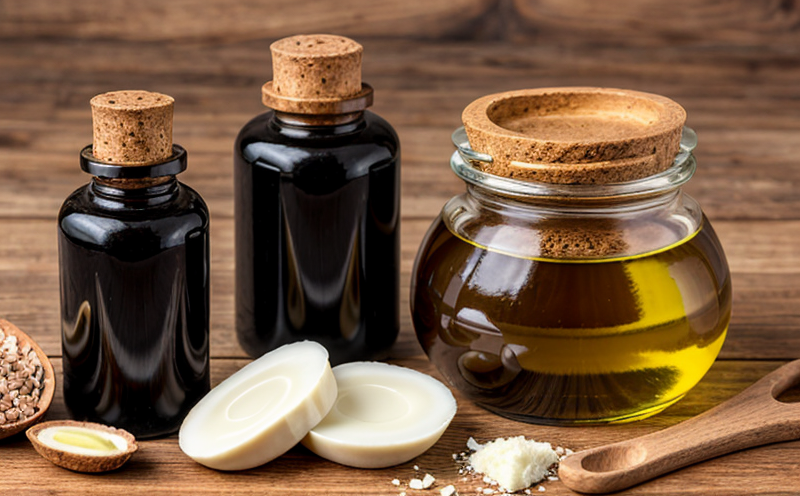Codex CAC/GL 3 Guidelines for Analysis of Fats and Oils
The Codex Alimentarius Commission's Guideline for Harmonized Methods (CAC/GL 3) provides a robust framework for the analysis of fats and oils, ensuring consistency across global food and feed standards. This guideline is critical in the food & feed industry as it sets out standardized methods that ensure accurate and reliable results when analyzing fatty acid profiles, triglyceride composition, and other relevant parameters.
The Codex CAC/GL 3 Guidelines are particularly important for industries dealing with fats and oils due to their role in quality control, compliance, and ensuring safe food products. These guidelines cover a wide range of analytical techniques such as gas chromatography (GC), high-performance liquid chromatography (HPLC), and infrared spectroscopy (IR). By following these standards, laboratories can ensure that the results are comparable and reliable across different regions.
The process begins with proper sample preparation. Samples need to be accurately weighed, homogenized, and extracted using appropriate solvents like methanol or chloroform/methanol mixtures. The extracted samples undergo derivatization if necessary before being analyzed by chromatography techniques. This ensures that the fats and oils are in a form suitable for analysis without affecting the results.
The Codex guidelines also specify precise conditions for sample preparation, such as temperature control during extraction and derivatization steps to prevent degradation of sensitive components like polyunsaturated fatty acids (PUFAs). Rigorous quality assurance measures ensure that each step in the process adheres strictly to these standards. This level of precision is essential because even small deviations can lead to significant errors in analysis, which could impact product safety or regulatory compliance.
One key aspect highlighted by CAC/GL 3 is the importance of using high-quality reagents and solvents throughout the analytical process. Low-grade materials may introduce impurities into the samples being analyzed, leading to false positives or negatives during testing. Therefore, it's crucial that all reagents used comply with international standards such as ISO or ASTM.
Another critical element of CAC/GL 3 is its emphasis on the need for traceable and accurate results. This means that every measurement taken should be backed by documented evidence showing how each step was carried out correctly according to specified procedures. Traceability ensures that any discrepancies in findings can be traced back to specific points within the analytical process, enabling quick identification of potential issues.
Compliance with CAC/GL 3 also extends beyond just laboratory practices; it includes proper documentation and record-keeping practices. All data generated during analysis must be accurately recorded and stored securely for future reference or auditing purposes. This ensures that there is a clear audit trail should any regulatory body require verification of compliance.
By adhering to the Codex CAC/GL 3 Guidelines, laboratories can maintain high standards of accuracy and consistency in their fat and oil analyses. This not only enhances the reliability of test results but also contributes significantly towards maintaining consumer trust and safety. Furthermore, adherence to these guidelines helps companies stay ahead in meeting regulatory requirements globally.
- Accurate fatty acid profiling
- Triglyceride composition analysis
- Polyunsaturated fatty acids (PUFAs) stability testing
- Compliance with international standards like ISO, ASTM, and EN
Industry Applications
The Codex CAC/GL 3 Guidelines find application across various sectors within the food & feed industry. Here are some key areas where these guidelines play a crucial role:
- Palm oil refining: Ensures consistency in product quality by providing standardized methods for analyzing fatty acid profiles and triglyceride compositions.
- Corn oil processing: Helps maintain high nutritional value through accurate measurement of essential fatty acids during production processes.
- Soybean meal manufacturing: Guarantees consistent protein content by ensuring precise determination of free fatty acid levels in raw materials.
- Peanut butter formulation: Ensures proper balance of fats and oils to enhance flavor stability and texture consistency throughout the product lifecycle.
Customer Impact and Satisfaction
By leveraging the Codex CAC/GL 3 Guidelines, customers benefit from several advantages that contribute directly to their overall satisfaction:
Increased confidence in product integrity: Adherence to these guidelines instills trust among consumers regarding the quality and safety of food products.
Better decision-making capabilities: Reliable analytical data enables informed choices about ingredient sourcing, formulation adjustments, and process optimization.
Enhanced regulatory compliance: Following international standards helps avoid penalties associated with non-compliance while building a positive reputation among stakeholders.
Competitive Advantage and Market Impact
Incorporating the Codex CAC/GL 3 Guidelines into your operations can provide significant competitive advantages:
Differentiation through superior quality: Consistent application of these guidelines sets you apart from competitors by offering products that consistently meet or exceed industry expectations.
Precise market positioning: Accurate analysis allows for precise targeting of specific market segments based on unique product characteristics.
Faster time-to-market: Standardized procedures streamline the entire testing process, reducing lead times without compromising quality or accuracy.





